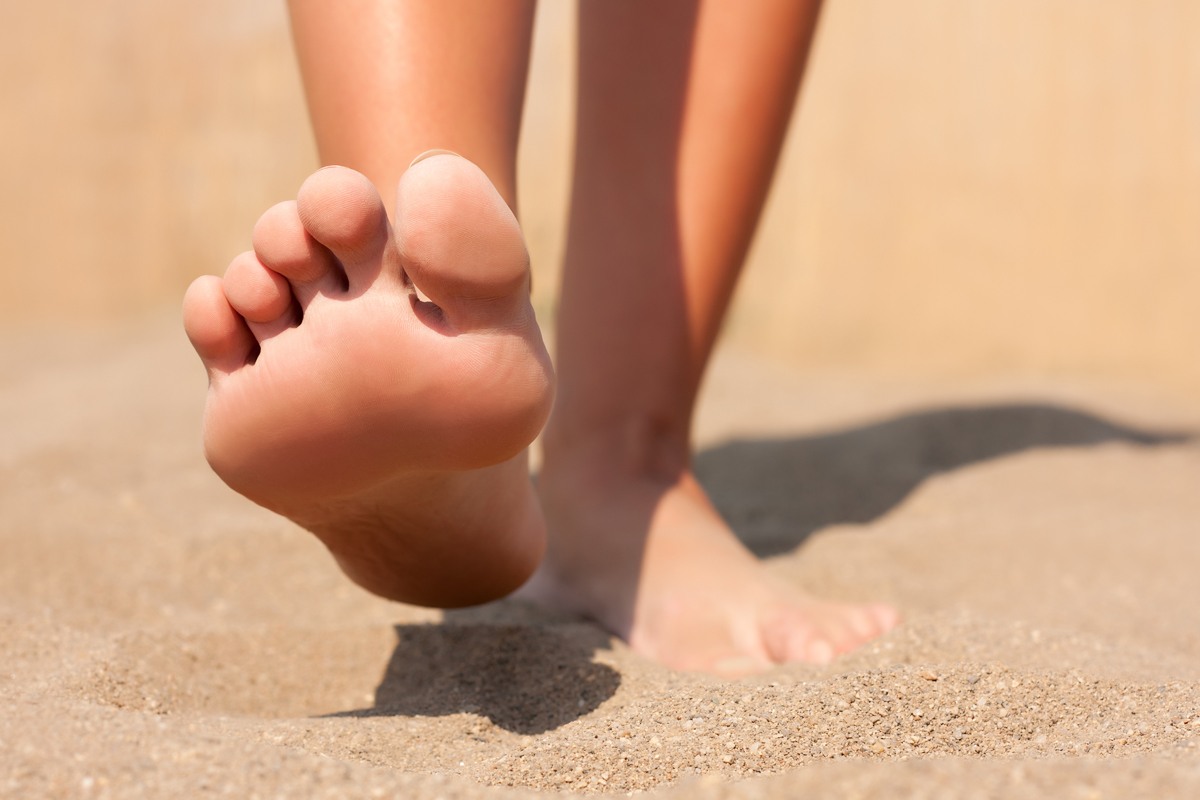Written by Dr Heather Davies-Strickleton, Senior Analytical Scientist
Now a new year is here we start to take a closer look at ourselves. Our body shape, weight and diet are key areas we frequently try to improve. But what about our foot health? We often neglect to look as far as our feet, which can hold some secrets and sometimes sinister surprises.
Healthy feet are pivotal to good mobility and influence our physical, as well as mental, well-being. The benefits of walking are numerous and span from reduced physical fatigue and better posture to improved creativity and problem-solving.1-3 With healthy feet we can improve fitness, feel independent and get around our local communities, meeting old friends and making new ones.
While healthy feet can facilitate our lifestyles, having unhealthy feet can hinder us. Unfortunately, foot problems are very common – in a study, called the Achilles Project, over 70,000 GP/dermatologist patients (irrespective of their initial diagnosis) were examined, and it was found that 57 % of patients had at least one foot disease.4 Despite the importance of healthy feet and the high prevalence of foot diseases, we don’t always care for our feet as we do other parts of our body, which can allow problems to go unnoticed.
Often the first sign that something is wrong with our feet is when we experience pain or discomfort. For instance, Athlete’s foot (tinea pedis) affects 1 in 6 of us and often starts with an irritating itchy rash, but can progress to painful cracking and blistering of the skin.5-6 Other common foot problems, including ingrown toenails, calluses (hard skin), bunions, and veruccas, are also commonly noticed when they become sore or uncomfortable. However, simply inspecting our feet regularly could identify such ailments earlier, providing opportunities to treat them before they become painful. The longer foot problems go untreated the more likely we are to adjust our usual walking motion to compensate for the discomfort, which can lead to problems elsewhere such as the hips and knees.7
Some foot problems are more likely to be noticed visually rather than through the onset of pain. Fungal nail disease (onychomycosis) is a fungal infection of the toenail, which is very common (affecting around 10% of the population8) and highly contagious. Often fungal nail disease is first noticed by the discolouration of a toenail. While this alone can be embarrassing, from there it can become a very stubborn, painful infection that can infect other parts of the body, such as the toes and soles of the feet (Athlete’s foot). Fungal nail disease is notoriously difficult to treat, but identifying it early may improve the success of treatments, or at least help to prevent it from spreading to other areas of the body.9
Being aware of your foot health is also particularly important for those diagnosed with other diseases, such as diabetes. Diabetes affects the flow of blood through the body, making foot problems harder to heal10. Therefore, it’s even more important to inspect feet regularly.
For an active, healthy lifestyle it’s important to maintain happy, healthy feet. We’re likely to walk around 110,000 miles, or five times around the world, in our lifetime11, so taking small steps towards good foot health will help us to put one foot in front of the other. To help know what to look out for, there are resources available online, including this visual guide to foot problems by the NHS. So next time you do a health-MOT make time for those kickers, and seek medical advice if you find signs/symptoms to stay one step ahead of those nasty foot ailments.
References
1. Bustle [Internet]. 8 Ways Walking Changes Your Brain For The Better, According to Science. Available from: https://www.bustle.com/p/8-ways-walking-changes-your-brain-for-the-better-according-to-science-10077769 [Accessed on 03/01/2020]
2. BBC [Internet]. 8 Reasons why we should all walk more. Available from: https://www.bbc.co.uk/programmes/articles/51SPhn5FKSYRnQNswfnWsN2/8-reasons-why-we-should-all-walk-more [Accessed on 03/01/2020]
3. Moccasin Guru [Internet]. Is Walking A Good Exercise? Available from: https://moccasinguru.com/is-walking-a-good-exercise/ [Accessed on 16/11/2020]
4. Burzykowski, T., Molenberghs, G., Abeck, D., Haneke, E., Hay, R., et al. High prevalence of foot diseases in Europe: results of the Achilles Project. Mycoses. 2003; 46: 496-505. Available from: https://www.ncbi.nlm.nih.gov/pubmed/14641624 [Accessed on 08/01/2020]
5. The Guardian [Internet] Dr LuisaDillner’s guide to… Athlete’s foot. Available from: https://www.theguardian.com/theguardian/2010/mar/16/dr-luisa-dillner-athletes-foot [Accessed on 08/12/2020]
6. Everyday Health [Internet] What is Athlete’s Foot? Available from: https://www.everydayhealth.com/athletes-foot/guide/ [Accessed on 08/01/2020]
7. Blanchard Valley Health System [Internet]. National Foot Health Awareness Month. Available from: https://www.bvhealthsystem.org/expert-health-articles/national-foot-health-awareness-month [Accessed on 03/01/2020]
8. American Family Physician [Internet]. Onychomycosis: Current Trends in Diagnosis and Treatment. Available from: https://www.aafp.org/afp/2013/1201/p762.html [Accessed on 03/01/2020]
9. Global Academy CME [Internet PDF]. Seminars in Cutaneous Medicine and Surgery. Onychomycosis: Diagnosis, Treatment and Prevention Strategies. Available from: https://www.globalacademycme.com/fileadmin/images/supplement_image/onychomycosis16/SCMS_Supl_Onychomycosis0316_V7_WEB.pdf [Accessed on 03/01/2020]
10. UnityPoint Health [Internet]. How to Stay on Top of Your Foot Health. Available from: https://www.unitypoint.org/livewell/article.aspx?id=21b4c73a-5d47-46f7-974f-8a5df23874d7 [Accessed on 03/01/2020]
11. Snow Brains [Internet]. Brain Post: How Far Does the Average Human Walk in a Lifetime. Available from: https://snowbrains.com/brain-post-how-far-does-the-average-human-walk-in-a-lifetime/ [Accessed on 03/01/2020]

